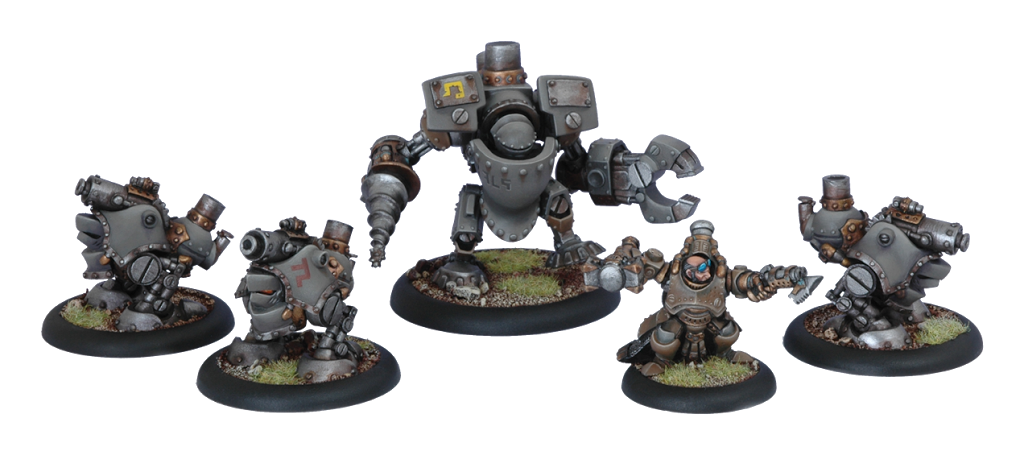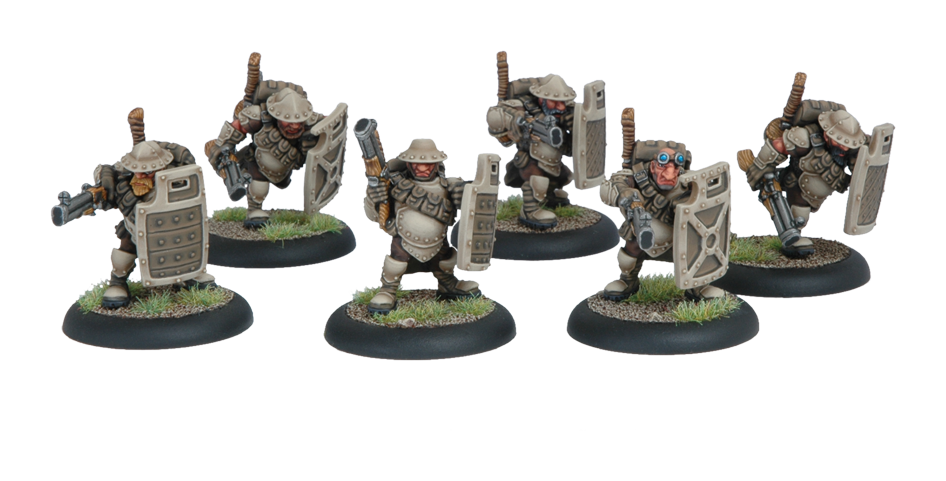Warmachine-Hordes: List Building 201

So last time we discussed basic list building techniques focused around synergistically focusing your model choices around your warcaster or warlock. Today we’re going to switch our focus to something less superficial and more advanced: the concepts of balance, contingency, and redundancy.
The idea of balance is an important one to think about when analyzing any list. When I think about balance, I think combined arms. The combined arms approach is often a solid one due to the fact that a variety of threat types are more adaptable than a single threat type, like an all-melee list or a gun line. The former can often be shut down via spell effects like Temporal Barrier or Inhospitable Ground while the latter can be made easier to deal with via things like Safe Passage or Stealth. This isn’t to say that a melee-heavy or gun line force is not viable for competitive play, but that there are certain risks associated with building too heavily on one end of the spectrum. Very specific measures should be taken if you wish to shift the balance to one side in order to not watch your army be diminished due to a bad match up.
Contingency refers to an army’s capability to mitigate a lack of balance on the other side of the board. If your opponent brings an all-‘jack or all-infantry army, you’ll want to have ways to deal with that, lest risk fighting a rough, uphill battle. Having multiple ways of dealing with common threats is important if you end up facing more of them than usual. This leads well into redundancy.
To create my core, I started with a Driller, a pair of Gunners, a Blaster, and Thor. I find that this core of 17 points makes it into most of my lists for the simple reason that it accomplishes several things: it provides anti-armor, anti-infantry, and assassination. At six points, the Driller is a bargain warjack that benefits grossly from Gorten’s Strength of Granite and Tune Up, making it a terror capable of wrecking most anything in the game. Blasters are fantastic for their cost, take a serious beating, destroy closely-packed infantry, and often give my opponents tunnel vision. To alleviate focus strain on Gorten and to get better penetration, I’ll give the Blaster to Thor, who despite losing access to Powerful Attack, can shove the Blaster 10″ into your lines to get just the right angle to guarantee the best possible template coverage with Tune Up to attack or damage rolls as the situation demands. As long as Gorten and a pair of Gunners are up and running, I have a solid assassination tool; his POW 16 Both Barrels attack with a pair of fully-boosted POW 12 attacks from the Gunners has and will continue to kill enemy warcasters and warlocks.
This list continued as an exercise in making the most of the High Shield Unit Attachment. In many of my early games with the High Shield UA, if I put the unit up front, it would evaporate due to its low DEF value despite their excellent ARM. If I put them in the second or third line, good targets would most often be engaged before they could open up with a Guns Blazing Combined Ranged Attack (CRA). To combat this, I paired them with Brun and Lug. What this pair provides is access to a cheap and easy knockdown ability that can disengage your shooter’s target in addition to providing solid anti-armor. Unfortunately, a full High Shield unit and Brun and Lug come in at 20 points, slightly less than 50% of my normal 35-point build total (42 with Gorten’s Warjack Points). Luckily, the core of my list is slim enough to make up for this. With the last five points, I add in a minimum unit of Forge Guard to act as utility infielders, responding where necessary with their decent accuracy and high damage potential.
Gorten Grundback (*7pts)
* Grundback Gunner (3pts)
* Grundback Gunner (3pts)
* Ghordson Driller (6pts)
Hammerfall High Shield Gun Corps (Leader and 9 Grunts) (8pts)
* Hammerfall High Shield Gun Corps Officer & Standard (3pts)
Horgenhold Forge Guard (Leader and 5 Grunts) (5pts)
Brun Cragback & Lug (9pts)
Thor Steinhammer (2pts)
* Grundback Blaster (3pts)
– 35 Points
A quick balance examination shows a healthy mix of resilience, melee, range, anti-armor, and anti-infantry, and great assassination potential. I have a little bit of Pathfinder, some Repair, and the several means of clearing out a jam. Redundancy and contingency is high with multiple forms of anti-armor and anti-infantry. For anti-armor, I have the Driller, Forge Guard, Brun and Lug, and Gorten. For anti-infantry I have my High Shields, Forge Guard, Blaster, Gunners, and Gorten. Gorten’s quality in scenario play is also fairly well known. This list has been thoroughly playtested and adjusted with the second Grundback Gunner occasionally be replaced with other things like Herne and Jonne (to help with high-DEF, low ARM threats like Iron-Fleshed Kayazi), Gudrun (as a berserking shock trooper), or a Bokur (for protection), but after extensive play over several months against a variety of opponents, I’ve found myself most comfortable with this based on the style of lists I typically see in my area.
I like The Hammer of Dhurg due to its rather unassuming nature. There aren’t any golden calfs in this list like the Deathjack, Molik Karn or Pygmy Burrowers, so people don’t necessarily feel immediately intimidated despite the fact that the list has real teeth. It isn’t without weakness, particularly that it has few ways of mitigating Incorporeal threats like Blackbane’s Ghost Raiders, but it still manages despite all that.
If you’re looking for more information on the Searforge Commission, I suggest checking out the Searforge Commission Sticky over at the Privateer Press boards.
That’s it for part II. How are you guys building and refining your lists?






